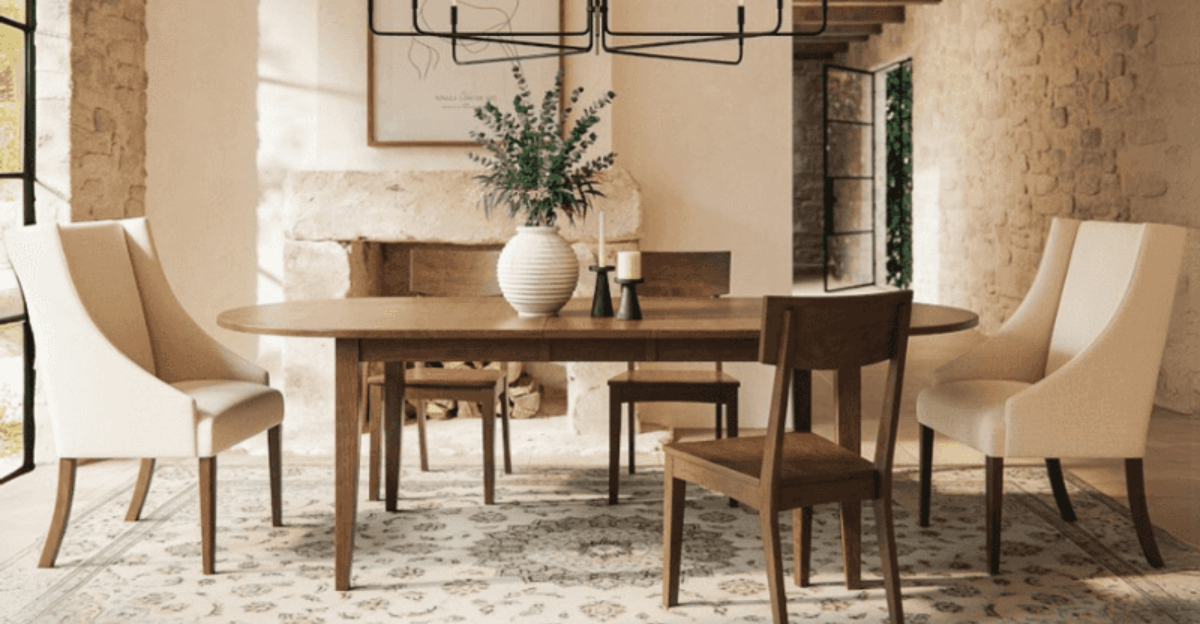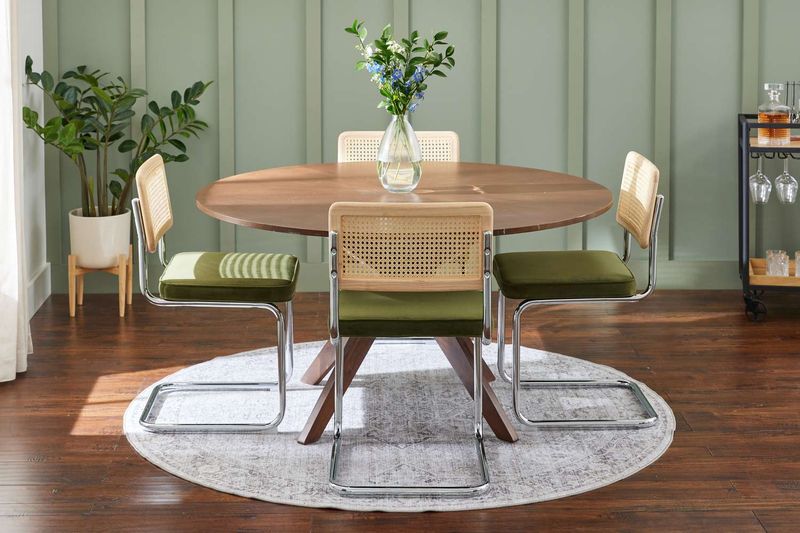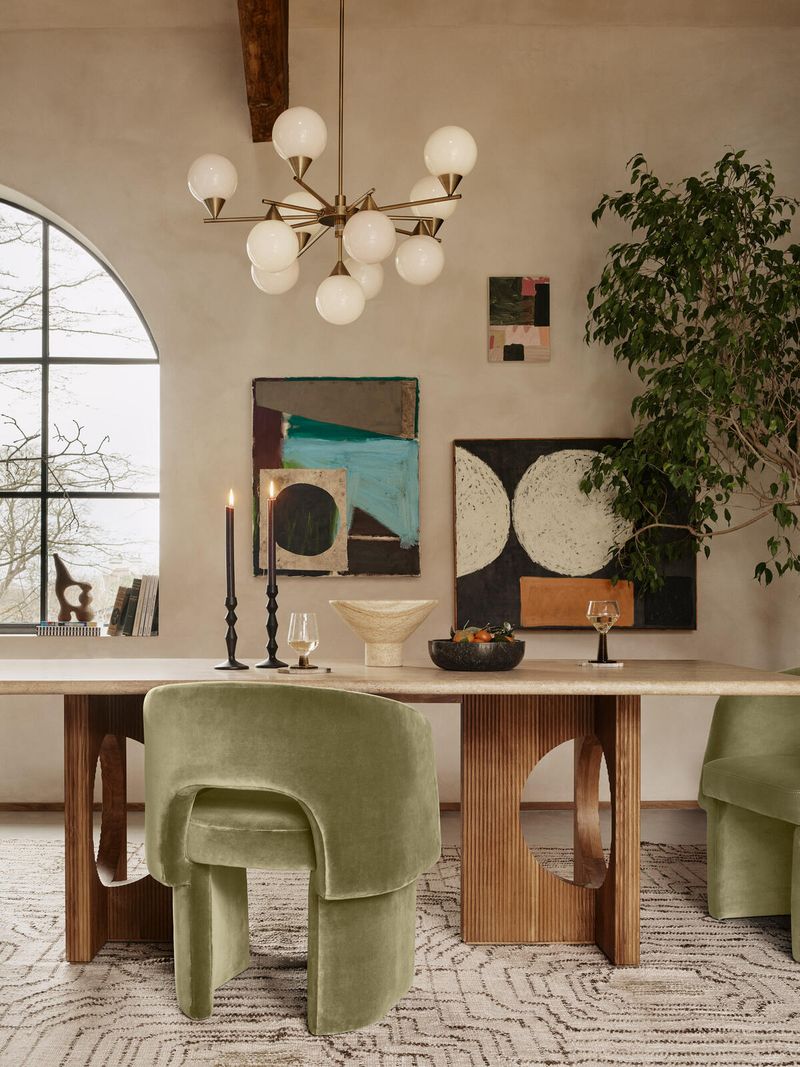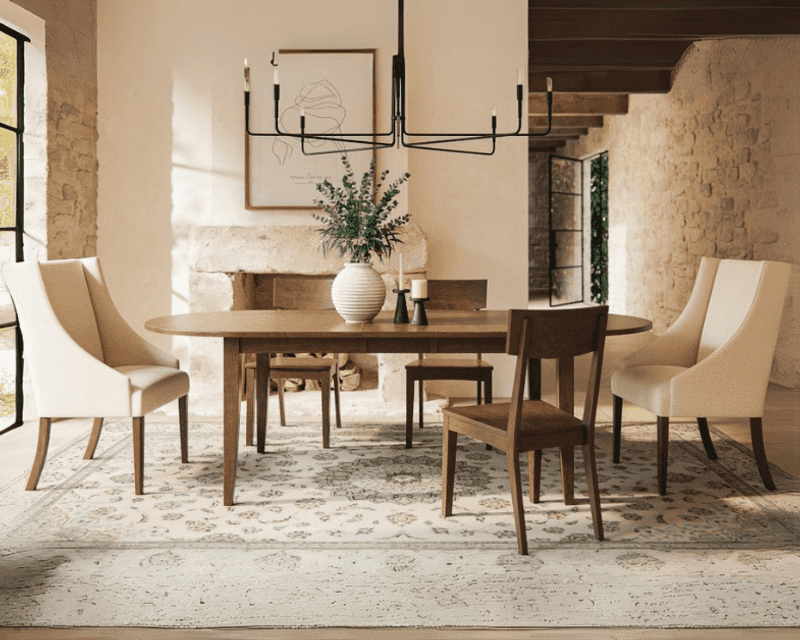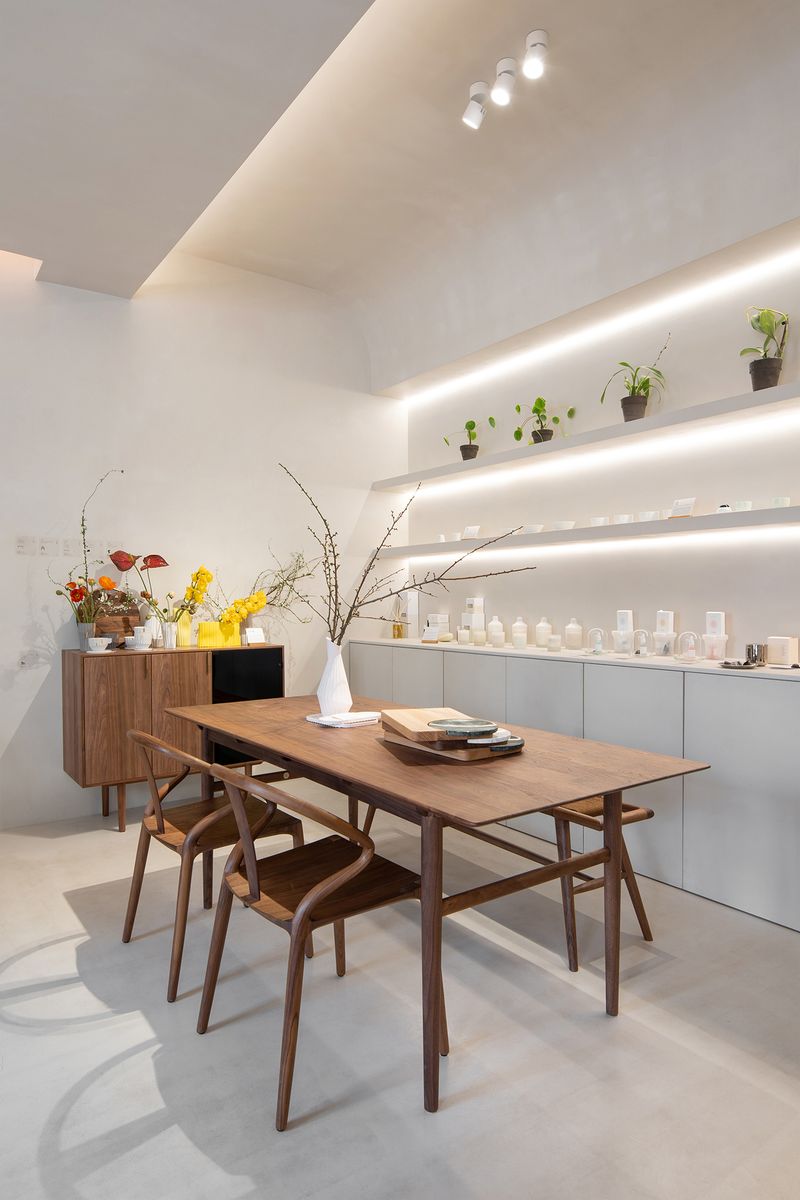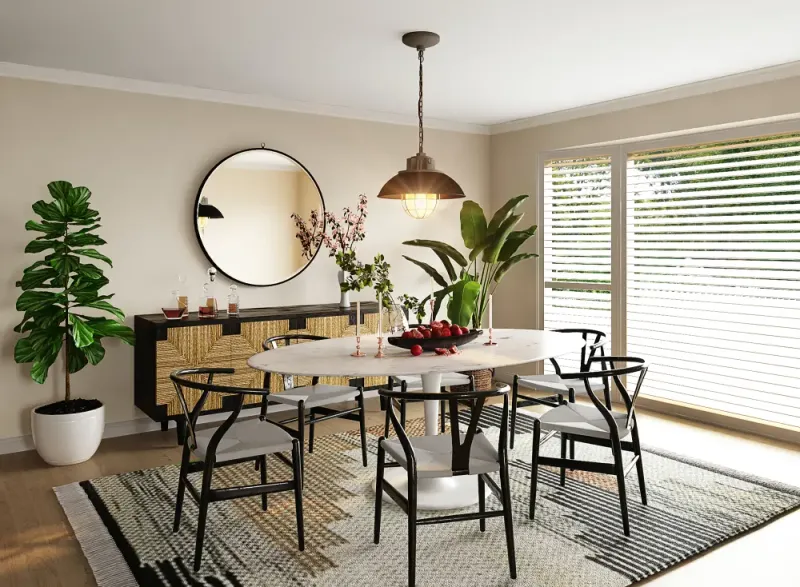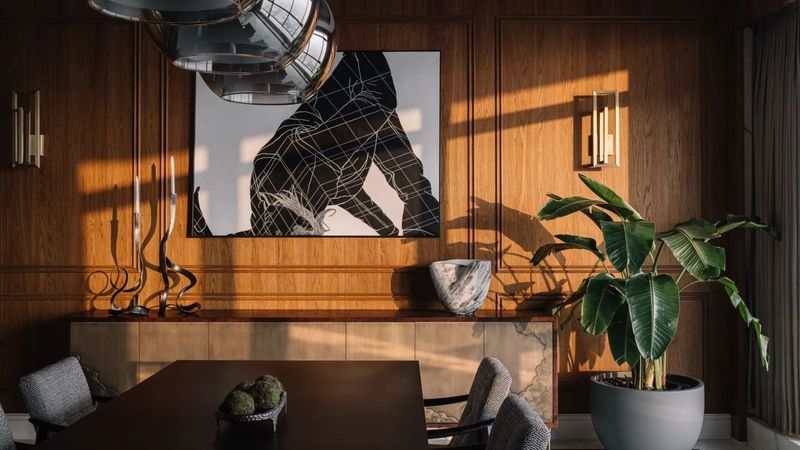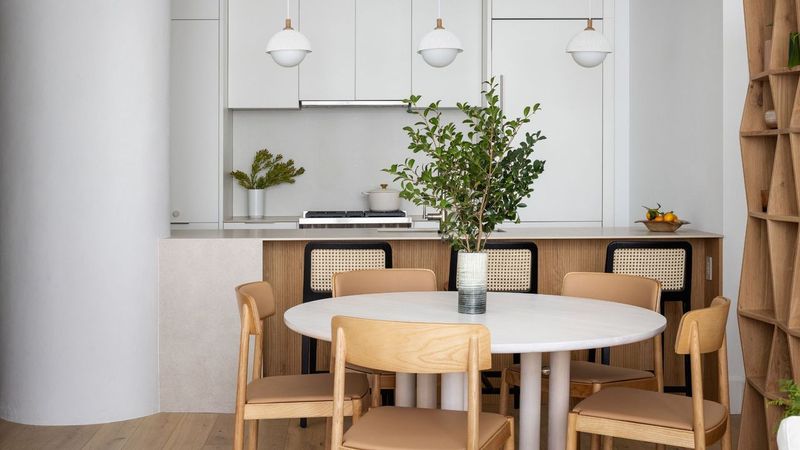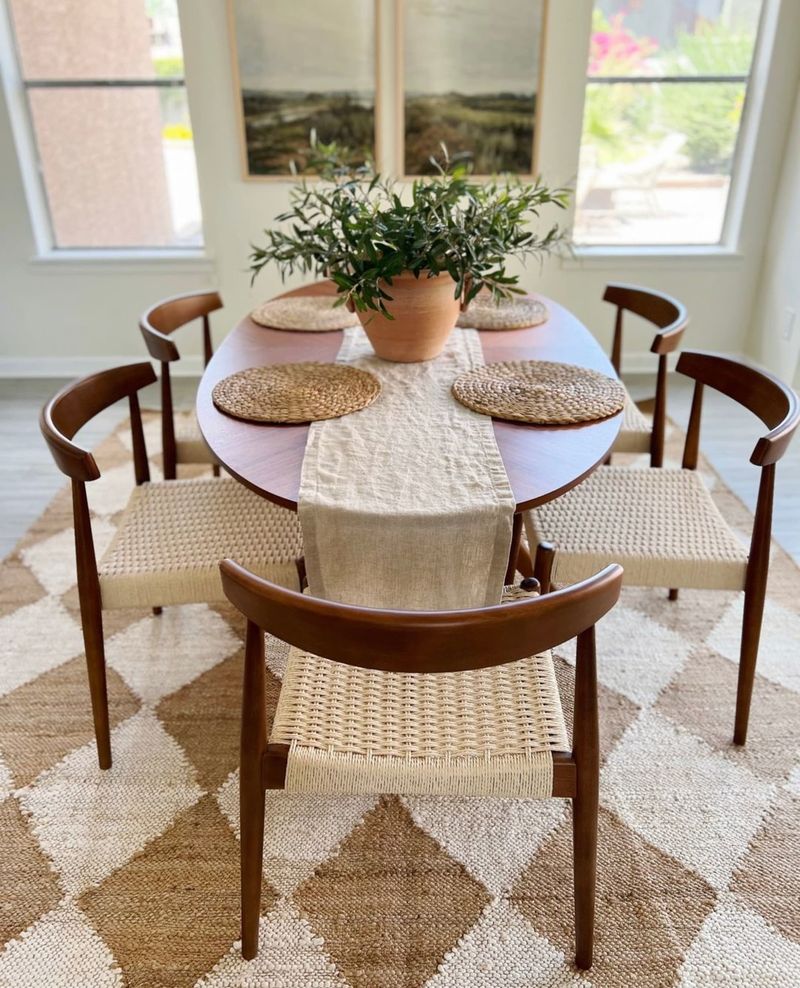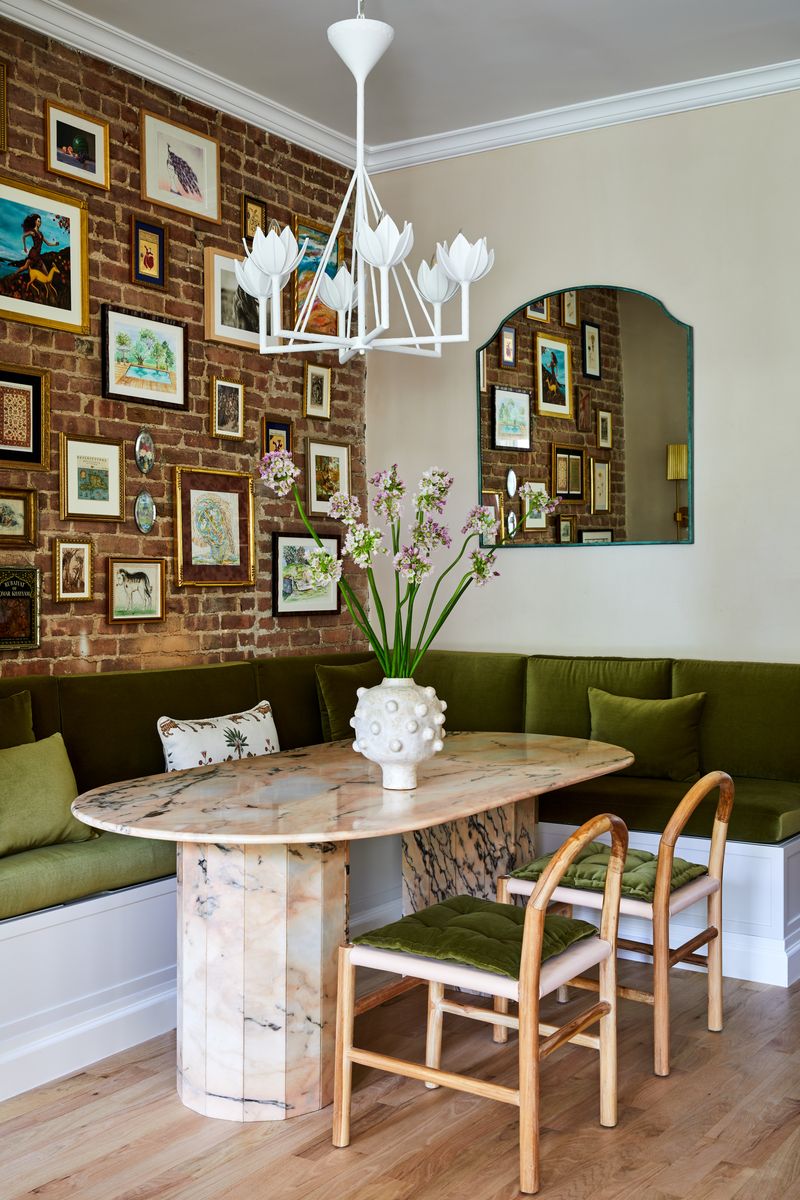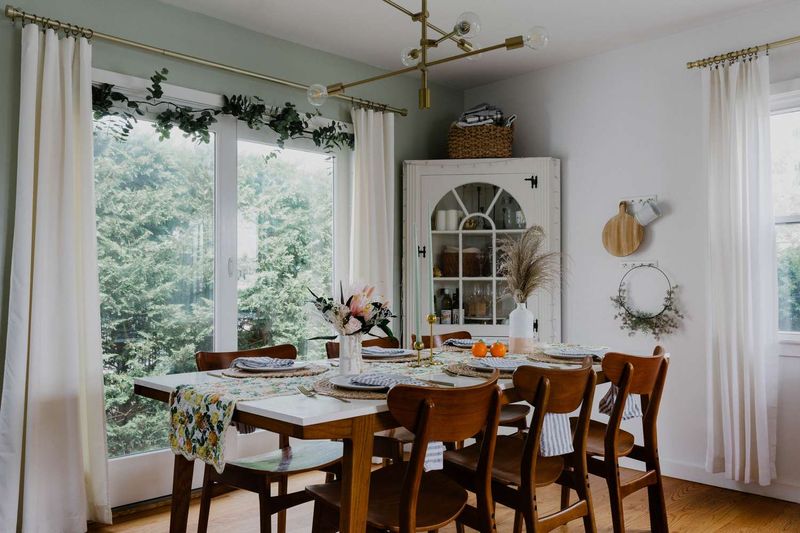Have you ever walked into a dining room and instantly felt at ease, like the space itself was giving you a warm, inviting hug? That might just be the magic of Feng Shui at work!
By carefully arranging and decorating the dining area, you can create a space that not only looks beautiful but also feels harmonious and balanced.
From the placement of your dining table to the colors on your walls, every detail can influence the energy of the room. Get ready to transform your dining room into a sanctuary of comfort and style with these 16 Feng Shui dining room rules!
1. Round Dining Table
Round tables are like the friends of the dining room world – no sharp corners to bump into, just smooth, continuous curves that promote harmony.
They encourage conversation and equality, as everyone is equidistant from each other. If you want a touch of elegance, try one with a glass top.
The transparency adds visual space, making the room feel larger. A round table is the perfect centerpiece to create a warm, inviting atmosphere. Just think of the delightful dinner parties you can host around it!
2. Natural Light
Sunlight is nature’s gift, and in Feng Shui, it’s considered a powerful source of positive energy. Opening up your dining room to natural light can brighten both the space and your mood.
Large windows or a strategically placed mirror that reflects sunlight can make a world of difference. If you’re lacking in windows, consider light, sheer curtains to let in whatever light is available.
Letting the sun in will transform your dining room into a cheerful oasis.
3. Comfortable Seating
Imagine sitting down for a meal, and the chair feels like a cloud! Comfortable seating is crucial in making your dining room inviting.
Plush chairs with cushions and upholstery can make all the difference. Not only do they provide physical comfort, but they also add texture and warmth.
Choose colors and materials that complement your dining room’s theme. After all, who wouldn’t want to linger over good food and conversation in a cozy seat?
4. Balanced Colors
Colors speak louder than words in Feng Shui. The right color palette can set the mood and energy of the dining room.
Soft, neutral tones promote relaxation, while brighter accents can energize the space. Consider earthy colors like soft greens or warm beiges that ground the room. An accent color, such as a bold red or gentle blue, can add dynamism without overwhelming the senses.
5. Declutter the Space
Clutter is like a sneaky energy thief, silently stealing away the positive vibes in your dining room. Embrace the art of minimalism by keeping surfaces clean and free of unnecessary items.
A decluttered space not only looks more spacious but also feels more peaceful. Use storage solutions to keep items out of sight but easily accessible.
The less chaos, the more room for good energy to flow. A tidy dining room is not just visually pleasing but also mentally refreshing.
6. Fresh Plants
Like tiny green housemates, plants provide vitality to every space. They stand for development and energy in the dining area, which are crucial components of Feng Shui.
To add color and freshness, pick indoor-thriving plants like ferns or peace lilies. Additionally, their presence can relax people and improve the quality of the air.
Strategic placement of them can improve the energy flow in the space. Keep in mind that good energy comes from healthy vegetables.
7. Soft Lighting
A warm, welcoming ambiance is the main goal of Feng Shui, and lighting sets the tone. Warm-toned bulbs or dimmable lights are examples of soft, ambient lighting that can be very effective.
Steer clear of harsh, glaring lighting as they might create an unwelcoming and frigid atmosphere. To give layers to the space, use several light sources, such as candles or lamps.
This encourages comfort and relaxation in addition to improving the eating experience. Light should be present, but it should be mild!
8. Mirrors for Energy Flow
Reflecting light and energy to create a sense of space, mirrors are like the Feng Shui secret agents. A mirror in the dining area can improve the flow of energy and make the space appear twice as large. But watch out!
Carefully place it to reflect aesthetically pleasing vistas rather than clutter. A strategically placed mirror can provide a feeling of openness and brightness in the space.
Finding the ideal location is crucial to maximizing its enchantment. Mirrors are useful works of art in addition to being ornamental.
9. Artwork and Decor
The final details that add character to your dining area are the artwork and décor. They should link with the energy of the space and arouse favorable emotions according to Feng Shui.
Choose artwork that speaks to you, such as abstract designs or images of nature. Steer clear of images that are too violent or disorganized.
The harmony of the space should be enhanced by the decor rather than undermined. These components give the dining room personality and make it a reflection of your own tastes and style.
10. Open Layout
Open layouts are like the free spirits of the design world, promoting interaction and energy flow between spaces.
In Feng Shui, an open dining room enhances connectivity with the rest of the home. It allows for a seamless transition from dining to lounging, encouraging socializing and movement.
The openness invites more light and air, making the room feel expansive.
11. Avoid Sharp Edges
In Feng Shui, sharp edges can ruin a party by interfering with the energy’s natural flow. Choose soft-lined or rounded-edged furnishings and décor.
This architectural decision lessens harsh, direct energy while fostering a sense of security and tranquility. It’s like welcoming a soft breeze instead of a blustery one inside your house.
By removing sharp angles, you’re creating a more harmonic atmosphere in addition to improving the room’s appearance.
12. Central Positioning
Equal energy distribution is ensured by the dining table’s central placement, which functions as the room’s heart. According to Feng Shui, putting the table in the middle promotes accessibility and equilibrium from all directions.
Symmetry is important, but so is creating an air of openness and friendliness. This thoughtful positioning promotes conversation and participation among diners. Because of its central location, the eating space is warm and inviting, with everyone feeling included and at home.
13. Harmonious Shapes
Shapes have personalities too, and in Feng Shui, the right mix can create harmony. Combine different shapes in your dining room to balance the energy.
Circular tables, rectangular rugs, and curved decor can work together to create visual interest. Avoid clashing patterns or overly repetitive shapes, which can disrupt the flow.
This blend of forms not only pleases the eye but also enhances the room’s overall energy. It’s like a visual symphony, where every note plays its part.
14. Personal Touches
Your dining room’s soul is its personal touches, which represent your individual journey and tale. According to Feng Shui, these components give the room coziness and a sense of community.
Showcase treasured trip keepsakes, family portraits, or treasures. These things give the space a feeling of identity and personalization.
Making sure they complement rather than overpower the room’s overall style is crucial. A personalized eating area is a place to belong, not merely a place to eat.
15. Seasonal Decor
A fun approach to keep your dining area lively and new is with seasonal décor. Seasonal décor changes in Feng Shui reflect the cycles of nature and maintain a dynamic vibe.
To correspond with the season, choose springtime floral arrangements or wintertime warm materials. Giving your space a new look every few months is similar to dressing it for the event.
The dining experience can be made more interesting and in harmony with the cycles of nature by implementing seasonal upgrades.
16. Appropriate Tableware
Tableware is not just functional; in Feng Shui, it’s part of the dining ritual that enhances the experience. Choose dishes, glasses, and cutlery that complement the room’s style and energy.
Opt for quality over quantity, where each piece adds to the meal’s enjoyment. The right tableware can elevate even the simplest meal into a special occasion.

